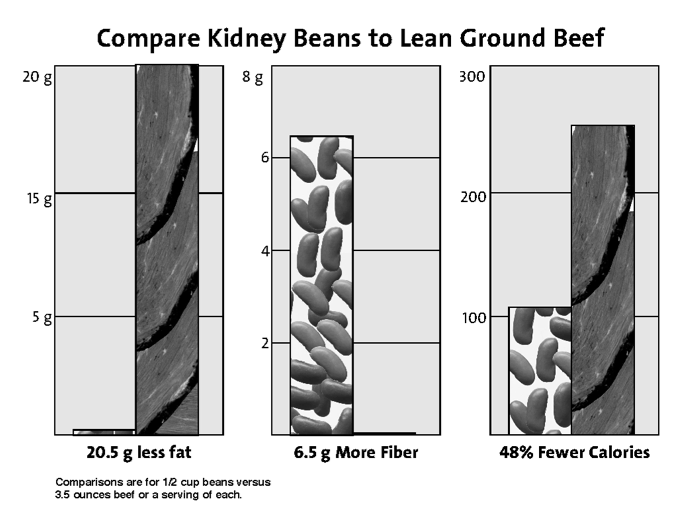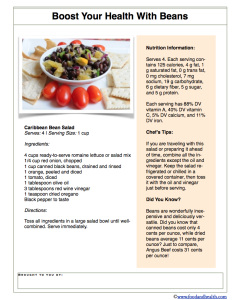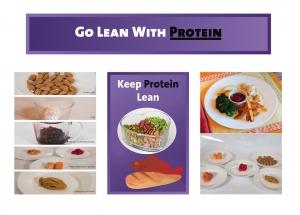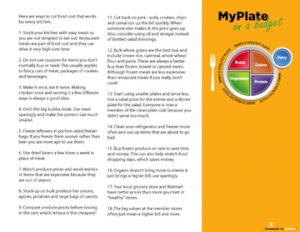Yes, we all know that beans are the musical fruit. But did you also know that they’re magical?
I mean, not magic magical, but beans are an inexpensive, tasty, and nutritious powerhouse! Today I want to introduce you to the joys of beans. And we’ll even talk strategies for making them less musical too.
14% of the U.S. population is eating beans on any given day. Pinto beans are the most popular bean, closely followed by navy, black, Great Northern, and garbanzo beans. These versatile legumes even fit into two distinct MyPlate groups — vegetables and protein. Did you know that beans can be considered a healthful protein food or a fantastic vegetable option? Fit them on your plate wherever they can do the most good.
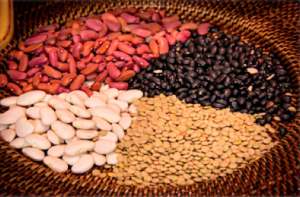 So, why eat beans? In a word: nutrients. They’re full of them! Beans are great sources of…
So, why eat beans? In a word: nutrients. They’re full of them! Beans are great sources of…
- Folate
- Iron
- Magnesium
- Plant protein
- Polyphenols
- Potassium
- Resistant starch
- Soluble fiber
- Total fiber
- Zinc
According to MyPlate, many Americans don’t get nearly enough folate or potassium in their diets. Beans are a great way to correct this issue. Plus, a recent study from the American Journal of Clinical Nutrition has revealed that beans “are among the only plant foods that provide significant amounts of the indispensable amino acid lysine.”
What does this mean for your health? Well, a diet rich in beans can…
- Reduce your LDL cholesterol levels.
- Reduce your risk of heart disease.
- Decrease your risk of diabetes.
- Help you manage your weight.
- Improve the health of your colon.
- Be rich in vital nutrients.
But wait, there’s more! Beans are wonderfully inexpensive and deliciously versatile. Did you know that canned beans cost only 4 cents per ounce, while dried beans average 11 cents per ounce? Just to compare, Angus Beef costs 31 cents per ounce!
Let’s take that bean and beef comparison one step further. What do you notice about the chart below?
A single serving of kidney beans has 20.5 fewer grams of fat, 6.5 more grams of fiber, and 48% fewer calories than lean ground beef! This means that beans are as great a bet for your health as they are for your wallet.
So, how can you make beans a part of your life?
Well, when it comes to canned beans, it’s as easy as draining and rinsing them, then tossing them into your next salad or batch of chili.
Dried beans require a little bit more effort. There are a few tried-and-true approaches, which I’ve outlined below…
- Overnight: Cover your beans with several inches of water and let them soak in a large pot overnight. Then, when you want to cook them, drain and rinse the beans, cover with a few inches of fresh water and bring the whole shebang to a boil. Let everything boil for a few minutes, then reduce to a simmer and cook for a few hours, until beans are tender.
- Quick: For a quicker method that skips the overnight soak, bring beans to a boil in a large pot. Boil for 2-3 minutes, then turn off the heat and let them soak for an hour. Bring everything to a boil once more and then simmer for a few hours, until beans are tender.
A good soaking ratio for dried beans is 5 to 1 — 5 parts water to 1 part dried beans. Let’s look at an example. If you have 2 cups of dried beans, soak them in 10 cups of water. The cooking ratio for soaked beans is 1 part broth or water to 1 part beans.
Now the exact cooking time for dried beans varies based on…
- Age of the beans
- Altitude
- Bean variety
- Water hardness
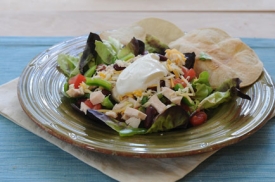 Phew! That was a lot of information about beans. It’s time to get practical. Here are some great (and free!) recipes for canned and cooked beans alike.
Phew! That was a lot of information about beans. It’s time to get practical. Here are some great (and free!) recipes for canned and cooked beans alike.
- 10-Minute Bean Soup
- Baked Beans
- Barbecue Bean Dip
- Caribbean Bean Salad
- Mediterranean Bean Soup
- Three Sisters Soup
- Tostada Salad
- Vegetarian Chili Pot
Oh and yes, sometimes eating too many beans at once will give you gas. Start introducing beans to your diet gradually in order to reduce your risk of musical side effects. Drink plenty of water while you eat beans and be sure to rinse canned beans well. These steps will further reduce your risk of any digestive discomfort so that you can eat beans without fear.
So what are you waiting for? Get our there and enjoy beans!
Here’s a free handout with a great bean recipe to help you get started…
For More Information:
- Dry Beans. http://www.ers.usda.gov/topics/crops/vegetables-pulses/dry-beans.aspx#.VDxOWudN3U4
- Nutritional and Health Benefits of Dried Beans. http://www.ncbi.nlm.nih.gov/pubmed/24871476
- Beans and Peas are Unique Foods. http://www.choosemyplate.gov/food-groups/vegetables-beans-peas.html
- The World’s Healthiest Foods: Black Beans. http://www.whfoods.com/genpage.php?tname=foodspice&dbid=2
- Cost of groceries. Peapod.com
Even More Bean Resources:
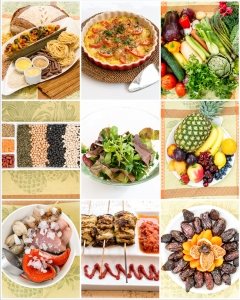
Mediterranean Meals Poster



